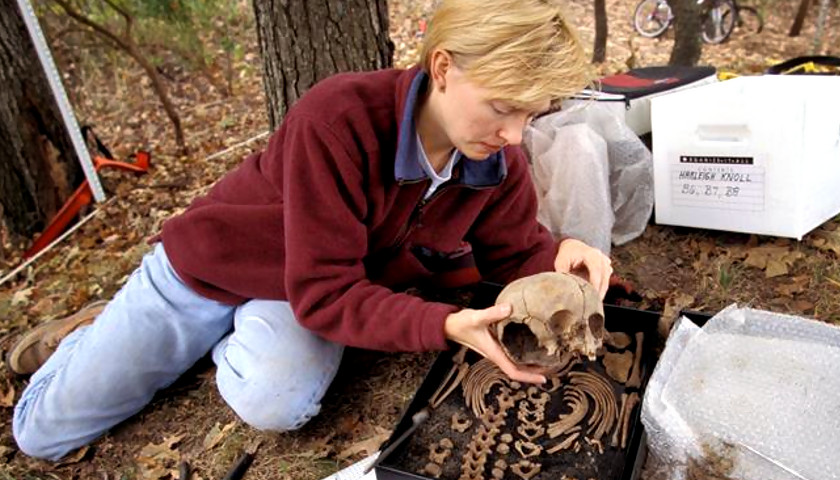by Elizabeth Weiss
There’s an eerie new theory filling academia’s ivied walls – the living and the dead are the same. This latest argument against the use of human skeletal remains in research and teaching, which I’ve come across in person (from students who attended my talk at Brown University, an elite Ivy League college), proposes that the only ethical treatment of skeletal collections is to treat the dead like the living. I’ve seen this same argument, which is applied to prehistoric and historic anthropological collections used to reconstruct past peoples’ lives, in conference programs and on museum websites.
Those researchers interested in examining past populations through the study of human remains, thus, should be required to follow the same ethical guidelines as medical researchers who conduct their work on living people. We need to gather consent forms. The Smithsonian National Museum of Natural History took down their Written in Bone website that explored ways anthropologists looked at 17th-century residents of the Chesapeake Bay Area, which included colonists, African slaves, and European immigrants. This was because it had come to their attention that they had no consent forms from these people who died 300-years ago!
Interested in studying the past through bones? Now, you must also provide evidence that there are safeguards in place to avoid harming these long-dead individuals. And, researchers of past populations, regardless of how old these collections are, should be required to incorporate HIPAA (the law that provides living patients with privacy concerning their medical records) regulations into their research methods. Of course, it’s a bit difficult to get consent from someone who’s dead. Yet, the repatriation and reburial activists see this as just the right tool to bury the zombified remains whose, last wishes they assume, were to be reburied.
Could there be other tactics to get around these ethical issues? Maybe universities should start employing spirit mediums to run seances to ensure that we can connect with the dead, ask them questions, and get that much-needed consent form signed; can a ghost sign a paper?
When being challenged by students who asked why I think the treatment of human remains should differ from the treatment of living people, I pointed out that there is a distinct difference between the living and the dead. Universities and other research institutes have review boards to ensure that animals used in research are still treated humanely, but this requirement is not present in the treatment of animal bones and fossils. Will researchers now have to treat paleontological collections in the same way as living animals? What is the proper care for a saber-toothed cat? I’m sure that a Native American tribe will be able to answer this question, since they held a “traditional” Native American funeral for P-22, the puma that lived and died in L.A.
We must fight against this anti-science ideology that brings in paranormal ideas to halt research that can help us understand the past, and improve forensic techniques to bring closure to the families of crime victims, and capture homicidal maniacs! These repatriation and reburial activists are far scarier than any horror movie monsters, as they reanimate the dead to bury science.
– – –
Elizabeth Weiss is a professor of anthropology at San José State University. She is on the board of the National Association of Scholars and is also currently a faculty fellow at Heterodox Academy. She is co-author of “Repatriation and Erasing the Past” (2020).
Photo “‘Bone Whisperer’ Kari Bruwelheide” by Chip Clark, Smithsonian.








